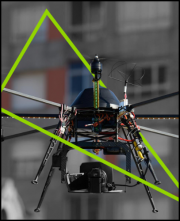
|
시장보고서
상품코드
1454214
항공 및 해운 산업의 탈탄소화(2024년)Decarbonizing Aviation and Maritime Industries - 2024 |
||||||
항공과 해운은 가격 경쟁력이 있고 에너지 밀도가 높은 연료를 필요로 하기 때문에 배출량 감축이 가장 어려운 두 부문입니다. 이러한 요구 사항으로 인해 배출량 감축을 달성하기 위해서는 두 부문 모두 에너지 전환 기술을 결합하여 접근해야 할 가능성이 높습니다.
자동차 부문에서는 전기자동차에 대한 수요가 크게 증가하고 있지만, 항공 및 해운 부문은 탈탄소화가 더디게 진행되고 있습니다. 두 부문 모두 배출량 감축에 대한 인센티브를 높이기 위해 대담한 넷제로 목표를 설정하고 있습니다. 그러나 IEA에 따르면 두 부문 모두 아직 달성하기에는 아직 멀었다고 합니다.
민간항공기의 경우, 무게와 에너지 밀도의 한계로 인해 전기화는 단거리 또는 하이브리드 솔루션으로 제한됩니다. 지속가능한 항공 연료(SAF) 및 수소와 같은 에너지 밀도가 높은 대체 연료의 생산과 비용 경쟁력을 높이는 것이 장거리 비행의 탈탄소화의 핵심입니다. 또한 이 부문은 총 배출량을 상쇄하기 위해 대기 중 탄소를 직접 회수하는 방법을 모색하기 시작했습니다.
해운 부문은 본 보고서에서 밝힌 4가지 에너지 전환 기술을 모두 활용할 수 있는 좋은 위치에 있습니다. 바이오연료와 선박 배기가스에 장착되는 CCUS 장치는 즉각적인 탈탄소화를 실현할 수 있습니다. 장기적으로 선박은 수소(또는 수소 유도체) 및 전기 추진 시스템과의 호환성을 높이기 위해 재설계될 수 있습니다. 그러나 이러한 기술은 비용이 많이 들기 때문에 채택을 촉진하기 위해서는 상당한 정책적 인센티브가 필요합니다.
이 보고서는 항공 및 해운 산업의 탈탄소화를 조사하고 분석하며, 두 부문의 탈탄소화 잠재력을 지닌 에너지 전환 기술로서 전기화, 대체연료, 수소, 탄소 포집·이용·저장(CCUS)의 적합성을 평가합니다. 또한, 두 부문의 주요 기업의 배출량 공개에 대한 스냅샷을 제공합니다.
주요 하이라이트
- 2015년 파리협정에는 포함되지 않았지만, 최근 유엔기구와 국제해사기구 등 여러 기관에서 항공 및 해운 부문에 대한 대담한 배출량 감축 목표를 설정했습니다.
- IEA는 전염병으로 인해 민간 항공의 배출량이 2019년 10억 톤의 CO2에서 2020년까지 6억 톤으로 감소했다고 밝혔습니다. 연말까지 항공편이 증가함에 따라 2021년 배출량은 7억 2,000만 톤의 CO2로 증가했으며 2022년 내내 배출량은 전염병 이전 수준보다 낮았지만 더 넓은 범위에서 회복 될 것으로 예상됩니다. 민간 항공은 여전히 개별 배출량이 가장 많으며, 이 운송 수단은 배출량이 가장 빠르게 증가하고 있습니다.
- 마찬가지로, 해운 부문은 COVID-19로 인한 배출량 감소에도 불구하고 여전히 기후변화 목표 달성에 있어서는 여전히 미달하고 있습니다. 홍해의 지정학적 긴장이 고조되면서 선박의 우회 및 항로 연장으로 인해 2024년에는 해운업의 배출량도 증가할 것으로 예상됩니다.
- 항공기와 선박의 전기화는 효율성을 높이고, 배기가스 배출을 없애고, 재생에너지 사용 기회를 창출하는 데 도움이 될 수 있습니다. 그러나 이 두 부문은 고밀도의 에너지 원이 필요합니다. 배터리의 에너지 밀도가 상대적으로 낮기 때문에 상당한 효율 개선이 이루어지지 않는 한 두 부문의 전기화는 당분간 단거리 이동에 국한될 것으로 예상됩니다.
- 바이오매스 기반 대체 연료는 기존 항공기와 선박에 최소한의 변경만으로 배출량 감축을 달성할 수 있는 방법을 제공합니다. 재생 디젤이나 SAF와 같은 많은 바이오연료는 기존 연료와 혼합하여 점진적인 배출량 감소를 달성할 수 있습니다.
목차
- 주요 요약
- 항공 및 해운의 탄소 배출
- 항공 및 해운의 기후변화에 대한 영향
- 항공 및 해운 산업의 넷제로를 향한 진보
- 에너지 전환 기술 소개
- 항공 및 해운의 4개 주요 에너지 전환 기술
- 기술 : 탈탄소화 가능성, 단계, 항공 및 해운에 대한 적합성별
- 에너지 전환 기술의 장단점
- 탈탄소화의 장벽이 되는 거시경제 과제
- 항공 및 해운의 넷제로 목표와 배출
- 항공 산업의 넷제로 목표와 배출 개시
- 해운 산업의 넷제로 목표와 배출 개시
- 항공 및 해운의 전기화
- 전기화는 단거리 이동 탈탄소화의 가능성을 가져온다
- 항공 및 해운 산업의 사례 연구
- 항공 및 해운의 대체 연료
- 넷제로 시나리오의 대체 연료 생산
- 국가와 기업의 SAF 목표
- 항공 및 해운 산업의 사례 연구
- 항공 및 해운의 수소
- 세계의 수소 생산과 수송 부문용 수소 생산
- 항공 및 해운 산업의 사례 연구
- 항공 및 해운의 CCUS
- 세계의 탄소 포집 능력(2018-2030년)
- 항공 및 해운 산업의 사례 연구
Aviation and maritime represent two of the most difficult to abate sectors due to their demand for cost-competitive and energy-dense fuels. Due to this requirement, it is likely that both sectors will need to engage with a combination of energy transition technologies to achieve emissions reductions.
While the automotive sector experiences a strong growth in demand for electric vehicles, the aviation and maritime sectors have been slow to decarbonize. To incentivize emission reductions, both sectors have set bold net-zero targets. However, according to the IEA, they remain far off track.
Aviation and maritime represent two of the most difficult to abate sectors due to their demand for cost-competitive and energy-dense fuels. Due to this requirement, it is likely that both sectors will need to engage with a combination of energy transition technologies to achieve emissions reductions.
This report assesses the suitability of electrification, alternative fuels, hydrogen, and carbon capture, utilization, and storage (CCUS) as energy transition technologies that hold decarbonization potential for both sectors. This report also includes a snapshot of emissions disclosures for both sectors' biggest companies.
For commercial aviation, weight concerns and energy density limitations will restrict electrification to short range or hybrid solutions. Increasing production and cost competitiveness of energy-dense alternative fuels such as sustainable aviation fuels (SAFs) and hydrogen will be key to decarbonizing longer-range flights. The sector is also starting to explore direct air carbon capture to offset its overall emissions.
The maritime sector is well placed to capitalize on all four of the energy transition technologies identified in this report. Biofuels as well as CCUS units fitted to ship exhausts can offer immediate decarbonization. In the long term, ships can be redesigned to increase compatibility with hydrogen (or hydrogen derivatives) and electric propulsion systems. However, the costly nature of these technologies will require substantial policy incentives to drive adoption.
Key Highlights
- Although not included in the landmark 2015 Paris Agreement, recent years have seen organizations such as UN bodies and the International Maritime Organization set bold emission reduction targets for the aviation and shipping sectors.
- The IEA has revealed that the pandemic caused commercial aviation emissions to drop from 1,000Mt CO2 in 2019 to 600Mt in 2020. An increase in flights towards the end of the year saw emissions increase to 720Mt CO2 in 2021. A wider rebound is expected although emissions remained below pre-pandemic levels throughout 2022. Commercial aviation remains the highest source of individual emissions and this form of transport is experiencing the fastest growth in its emissions.
- Likewise, the maritime sector also remains off track for achieving its climate targets, despite the pandemic driving a drop in emissions. Emissions from shipping are also expected to be boosted in 2024 due to rising geopolitical tensions in the Red Sea causing the diversion of ships and the extension of journeys.
- Electrifying aircraft and ships would help to increase efficiency, eliminate tailpipe emissions and create opportunities for using renewable energy. However, these two sectors require high density energy sources. The relatively low energy density of batteries will restrict the electrification of both sectors to short journeys for now, unless significant increases in efficiency can be achieved.
- Biomass-based alternative fuels offer a way of achieving emission reduction while having to make minimal changes to existing aircraft and vessels, with many biofuels such as renewable diesel and SAFs also having the capability to be blended with conventional fuels for gradual emission reduction.
Scope
- Aviation and maritime's current carbon emissions and net-zero goals.
- An overview of four technologies that will be key to decarbonizing both sectors, which include electrification, alternative fuels, hydrogen and carbon capture, utilization and storage (CCUS).
- Net-Zero targets and scope 1 and 2 emissions for the largest airlines and shipping companies
- SAF blending targets for countries and airlines
- An assessment of energy transition technologies' suitability for different use cases in aviation and maritime.
- Market forecasts for hydrogen, CCS, renewable fuels.
- A summary of challenges that will hamper the adoption of these technologies by both industries.
- Case studies from companies that are leading both sectors' decarbonization.
Reasons to Buy
- Identify the market trends of energy transition technologies within aviation and maritime.
- Develop market insight into current rates of technology adoption in aviation and maritime and the factors that will shape both sectors' decarbonization.
- Identify the companies most active within electrification, alternative fuels, hydrogen and CCUS technologies in the aviation and maritime industries.
Table of Contents
Table of Contents
- Executive Summary
- Aviation and maritime carbon emissions
- Aviation and maritime's contribution to climate change
- Aviation and maritime's progress towards net-zero
- Introduction to energy transition technologies
- Four key energy transition technologies for aviation and maritime
- Technologies by decarbonization potential, stage, and suitability for aviation and maritime
- Advantages and disadvantages of energy transition technologies
- Macroeconomic challenges that will pose a barrier to decarbonization
- Aviation and maritime net-zero targets and emissions
- Aviation net-zero targets and emissions disclosure
- Maritime net-zero targets and emissions disclosure
- Electrifying aviation and maritime
- Electrification presents decarbonization potential for short journeys
- Case studies from aviation and maritime
- Alternative fuels in aviation and maritime
- Alternative fuel production under a net-zero scenario
- National and company SAF targets
- Case studies from aviation and maritime
- Hydrogen in aviation and maritime
- Global hydrogen production and hydrogen production for transport sector
- Case studies from aviation and maritime
- CCUS in aviation and maritime
- Global carbon capture capacity, 2018 - 2030
- Case studies from aviation and maritime



















